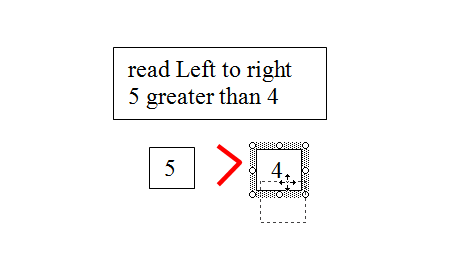Background
I sometimes tutor high school students and I have come across various problem types that are best represented by the following two problems.
They are unable to keep track of the correct direction of inequality symbols. That is, if I ask then to write "5 is bigger than 4" they will guess between $5 >4$ or $5<4$.
They are unable to set up a division problem. That is, if I ask them to "write 10 divided by 2", they are tempted to often write $10\overline{)2}$ or $\frac{2}{10}$. However, if I ask them "how many times does $2$ go into 10," they are able to provide the correct answer, but they cannot perform long division.
Question
Keeping in mind that I have no professional training as an educator, how can I help students keep these two ideas straight?
Here is what I have tried
I vaguely recall a math teacher from elementary school telling me that the inequality sign is like the mouth of an alligator and it likes to eat the bigger number. The students have no problem recognizing which number is bigger but for some reason this explanation doesn't help. Since the student doesn't seem to have a problem with "solving" an inequality problem with algebraic manipulation, i.e, a problem like $x+7<2x$, their teacher has told them (and the rest of the class) that there will be no "word problems on their tests or quizzes. That is, an inequality will always be set up for them to solve. Should I not worry too much about whether or not a student can properly write an inequality and be satisfied that they are able to perform just the algebraic steps?
For the division problem, their teacher told them to just type it in the calculator. That is, $10$ divided by $2$ translates directly to $10÷2$ on a calculator. Should I also not worry about this?
Further considerations
I work at a tutoring center so sometimes the kids will come in with their own homework and sometimes they will work on assignments we give them. The reason why I feel that the students should learn the two concepts above is because their teacher next year (or the year after) may have a different policy for setting up inequalities, etc. Furthermore, the students are often faced with other problems like the two listed so maybe helping the student work through them will help them sort out other ones like it. Note that I only have an hour a week (sometimes 2 hours) with the students.
